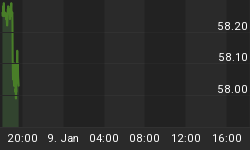Sunday, Sept. 14: Secretary Paulson finally makes a brave decision; enough is enough, let Lehman go bust. After all, the federal government shouldn't be rescuing every financial institution that stumbles... or should it?
Monday, Sept. 15: The financial markets react badly to the news, and the Dow suffers its biggest drop since 9/11/2001.
Tuesday Sept. 16: The Fed succumbs to political pressure and promises to write a check for an $85 billion rescue package for AIG, hoping to bring some relief to the markets.
What is wrong with this picture?
First, Bear Stearns, then Indie Mac, then Freddie Mac & Fannie Mae, now AIG...
Where does it stop?
When will the country's taxpayers cry "Enough"?
Can our federal government bail out the entire U.S. financial sector?
And what about our troubled auto industry (save Main Street instead of Wall Street!)?
And the airline industry (critical to the functioning of our economy and the beat-up victim of oil speculators)?
Are these measures further steps toward a centrally planned economy? Where is the triumphant capitalism of the post-Cold War era?
I spent six years as a business turnaround consultant. I've seen the good that comes from letting private companies deal with their own problems - either face up to mistakes or suffer as they get worse. After bankruptcy, if that's what happens, comes a fresh start. But government rescue efforts sabotage that painful but healthy process. The longer the government delays the unwinding of the current financial bubble, the greater will be the cost and uncertainty for our country, its economy and its taxpayers.
Keep in mind that the government isn't run by wizards, geniuses or even people with ordinary, practical experience. It was our government that sponsored the disastrous housing bubble by forcing interest rates to artificially low levels (negative real rates), by deregulating financial institutions while continuing to guarantee their liabilities and, finally, by encouraging the FHLB, Fannie Mae & Freddy Mac to loosen credit standards and make it easy for a homebuyer to get in over his head.
Without knowing what it was doing, the federal government offered irresistible incentives for crafty financiers to use dare-devil leverage to pile up huge profits for as long as the government could keep the system going.
The consequence of the reckless mismanagement that government incentives pleaded for is a huge overhang of derivatives -- over $500 trillion, or more than 10 times the market cap of the all of the world's public companies.
Does the Fed honestly believe that handing out another $85 billion in capital will solve a $500 trillion problem? The Fed is continuing to reward bad behavior and is delaying the inevitable. There is a time-tested rule, whether with employees, children, or even pets; rewarding poor behavior results in more of the same. Financial managers respond in the same way.
No matter what the consequences might be, the faster we get through this crisis, the better off we will all be. A fresh start is what we need at this point, no matter how painful!
Instead, our government will bail AIG out of its troubles, changing the rules of the game once again. Instead of letting the bankruptcy court distribute AIG's assets based on established creditor claims, the Fed is stepping in, becoming a secured creditor and de facto owner without the consent of existing shareholders and creditors.
In the restructuring world, this is called "preference" and is usually thrown out by bankruptcy courts, since it is contrary to established rules for "cramming down" new debt on the stakeholders of distressed companies. Disregard for the rule of law by our own government using authority granted in the Federal Reserve Act isn't going to reassure the foreign holders of trillions of U.S. debt - a particularly inconvenient fact when we need their support more than ever.
Our Chief Economist Bud Conrad provides a picture of how fast money is already leaving our country.

A great and inevitable deleveraging of financial excesses is underway. Our dollar will be collapsing, investors will be running for the exit, and panic will be moving in.
The AIG and any subsequent bailouts may delay the pain, but that is the best they can do. Our recommendation to investors is to use the little time they have left to find refuge in real, tangible money -- specifically gold -- and in the stocks of companies that produce gold and other commodities the world uses, especially food and energy.
The surest way to fortune in strange times like these is by investing in big market trends. For over a quarter century, Casey Research has been providing investors with insightful investment newsletters - and now their new flagship publication, The Casey Report, zeros in on the big trend targets of the day. To find out how profitable this approach can be - and what it can mean to your portfolio to be on the right side of the trend - click here now to learn more about The Casey Report. And the current trend of financial panic is sending more and more money into gold and gold stocks.... And Casey's BIG GOLD provides investors the down-in-the-tunnel, boots-on-the-ground insights into the large cap mining companies that are most likely to see the big profits. Find out more about BIG GOLD.















